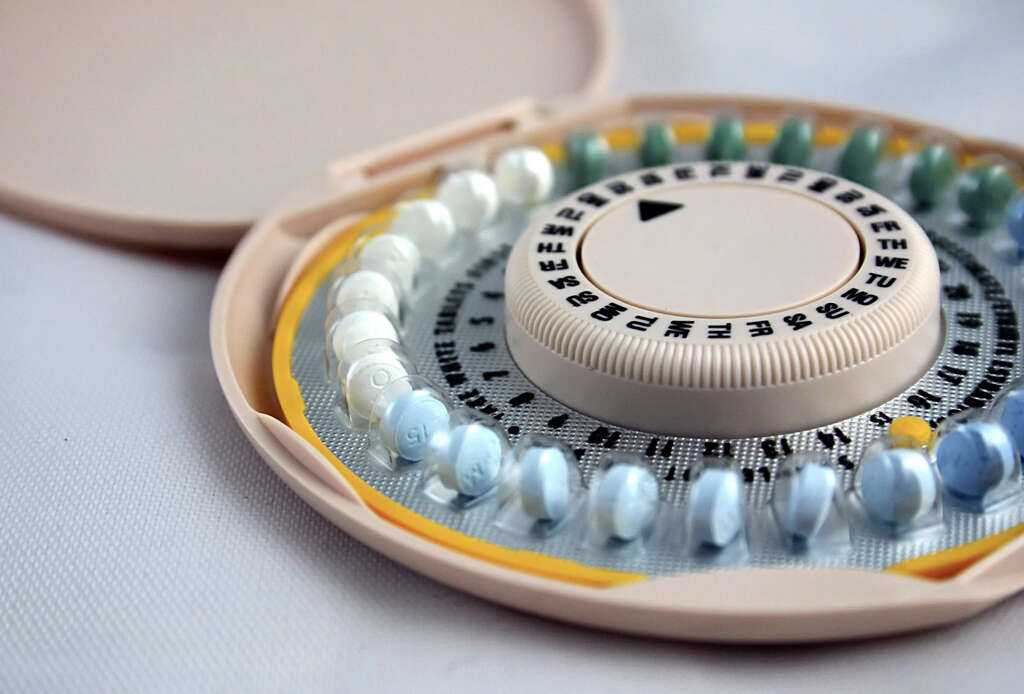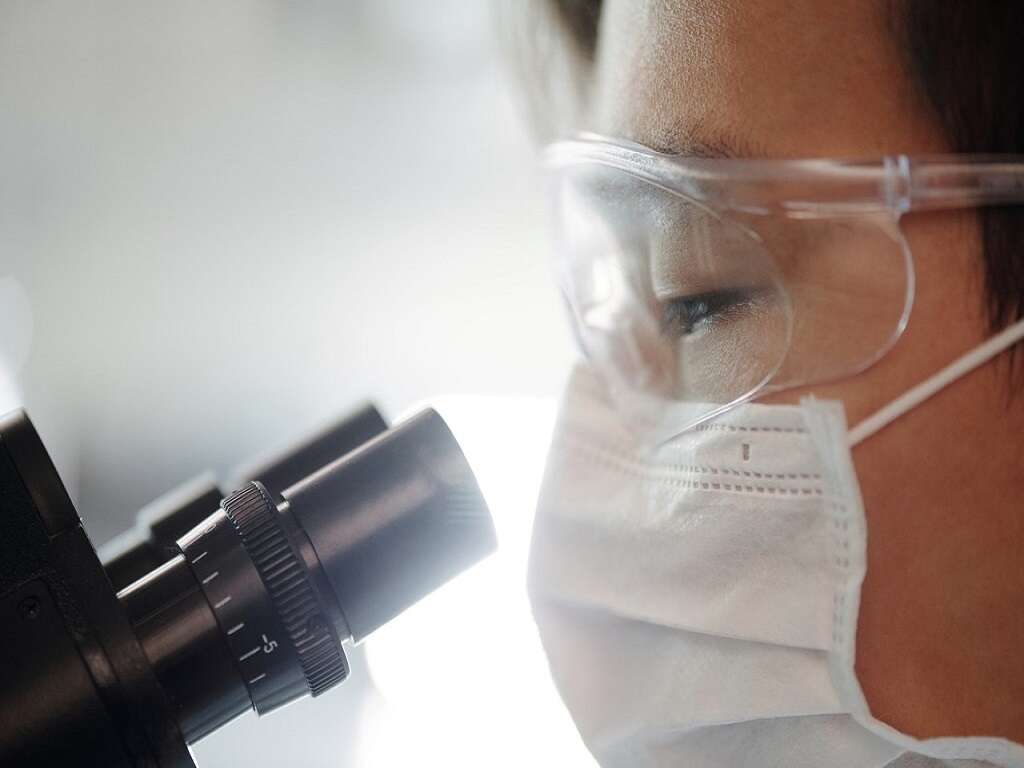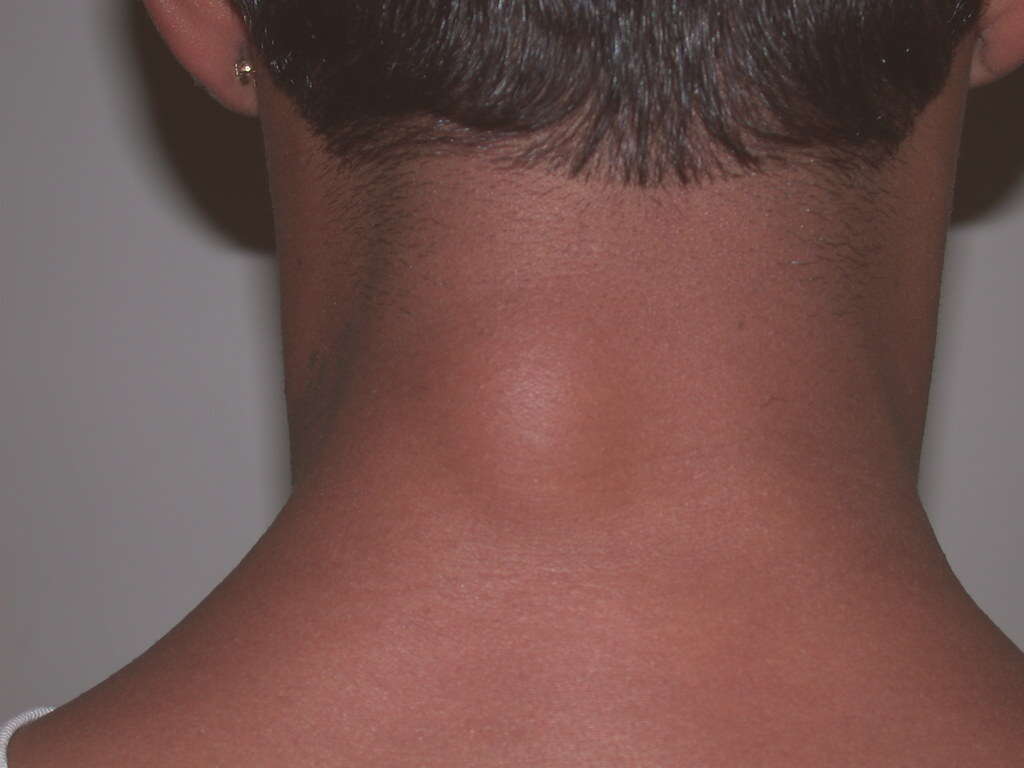What Is a Hemorrhagic Cyst?
Ovarian cysts come in several different forms. All types of cysts on the ovary contain some type of fluid encased in a sac or a pocket.
Hemorrhagic cysts are a specific type of ovarian cyst that contain the presence of blood within the cystic sac. Hemorrhagic cysts are common and usually do not cause any long-lasting problems but can be very painful.
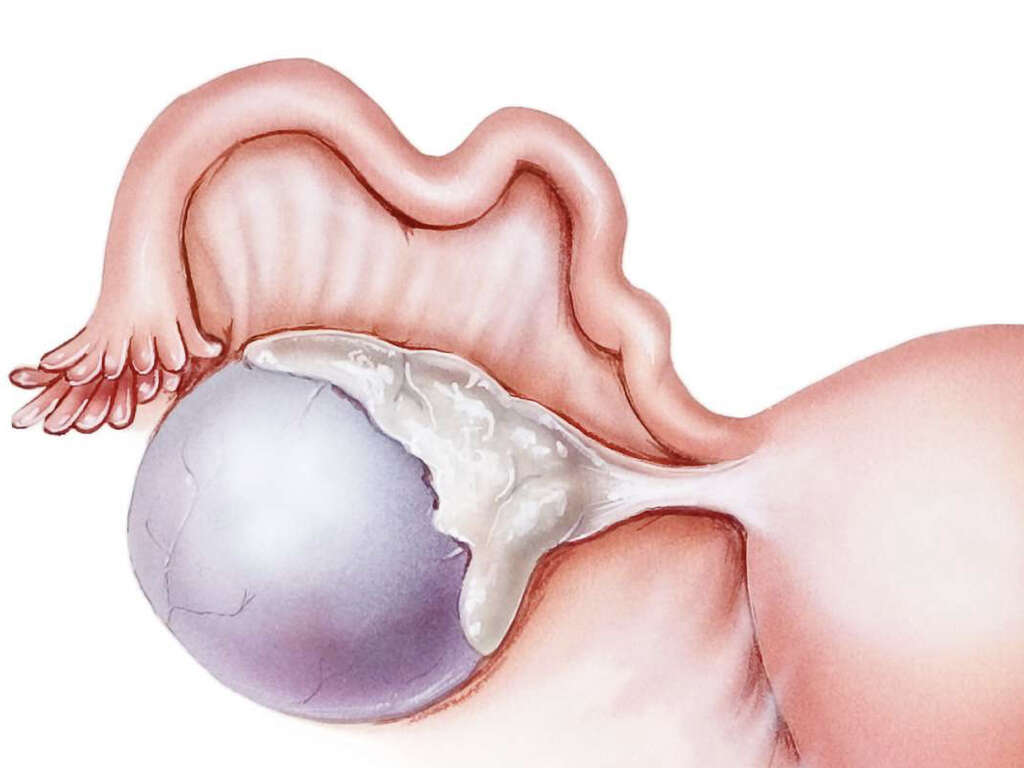
1. What Is an Ovarian Cyst?
A cyst is a sac that develops in the body and fills with fluid or debris. Ovarian cysts form inside or on the surface of an ovary and are very common. During the menstrual cycle, a cyst may form due to hormonal changes.
In many cases, ovarian cysts do not cause any symptoms and are only found during routine screening. These cysts usually go away without any intervention within a few months. However, some ovarian cysts can cause painful symptoms and complications.

2. How Does a Hemorrhagic Cyst Differ from Other Ovarian Cysts?
A hemorrhagic cyst is a specific type of ovarian cyst that contains blood inside the sac. Most cysts of this type are called functional cysts, which means they develop as part of the menstrual cycle, are usually benign and typically go away without treatment.
Unlike other types of ovarian cysts, hemorrhagic cysts are often symptomatic and show up differently on an ultrasound than other types of cysts. Although the diagnosis of a cyst that has anything other than fluid inside can be alarming for a patient, most hemorrhagic cysts are harmless.
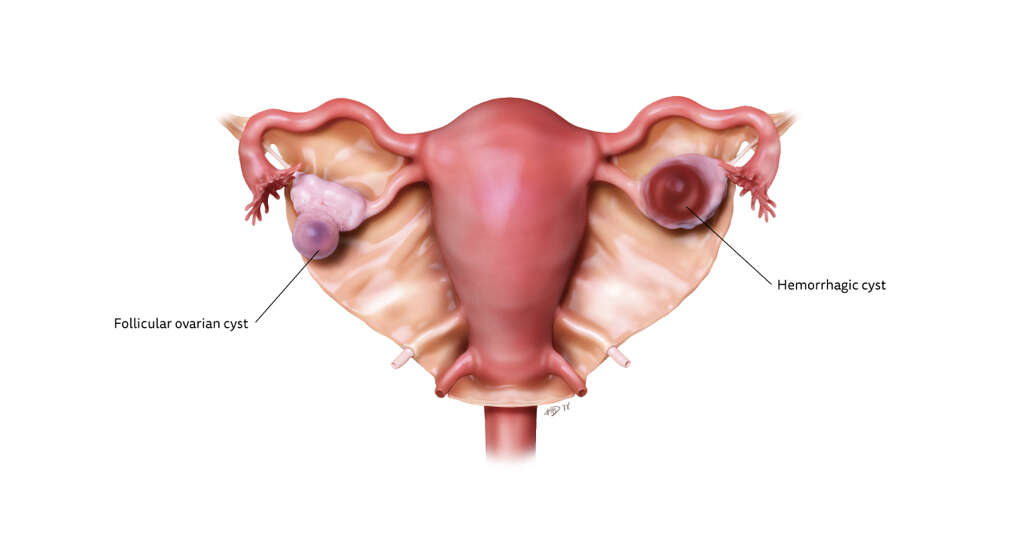
3. What Causes a Cyst to Develop?
In any given month the normal function of an ovary can be slightly altered, resulting in a change in ovulation or the actions that directly follow ovulation. After ovulation, a structure called a corpus luteum develops in the ovaries. This structure is very vascular.
Sometimes a small vessel breaks in the corpus or follicular luteum, and the blood is trapped inside a cyst. Although they are sometimes asymptomatic, hemorrhagic cysts are typically found on ultrasound after the patient complains of pain.
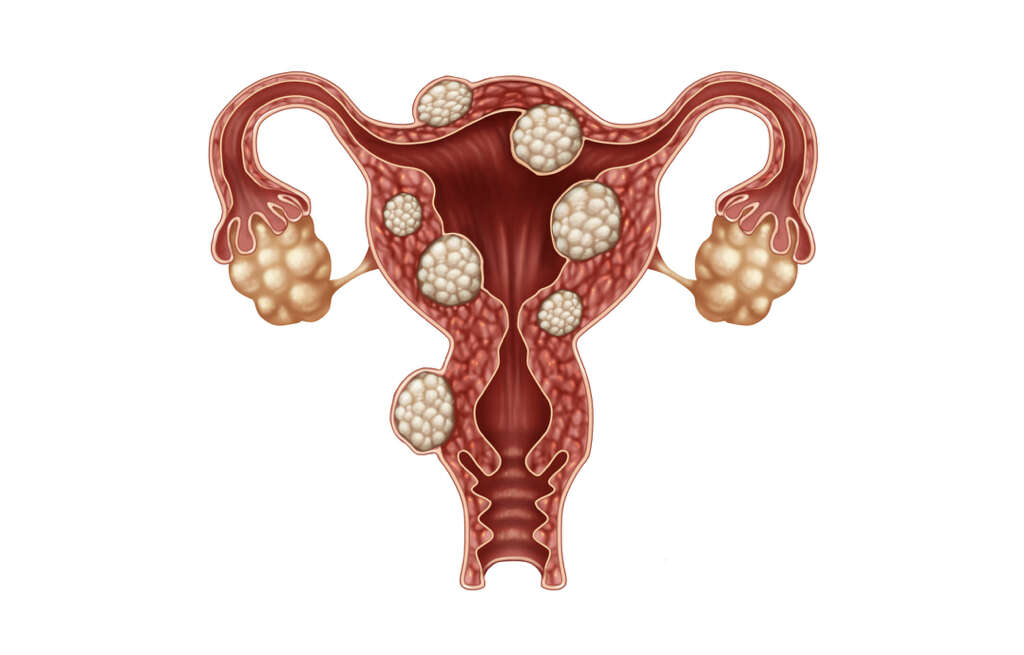
4. What Are the Symptoms of a Hemorrhagic Cyst?
Like other ovarian cysts, some hemorrhagic cysts do not have symptoms at all and are found during an ultrasound when checking for other conditions. However, this type of cyst could cause pain than other functional cysts of the ovaries.
Pelvic pain, which can be severe, and tenderness in the lower abdomen can occur with a cyst of the ovary. The abdomen can become bloated or swollen and in some cases nausea or vomiting occurs. Patients suffering from an ovarian cyst also report an aching sensation that radiates from the back and down the legs. A missed period without pregnancy can also be a sign of an ovarian cyst.

5. When Is a Doctor Visit Needed?
Most ovarian cysts resolve without treatment, but people who suffer sudden severe pain may be experiencing a ruptured cyst. A ruptured cyst is a common reason for women of childbearing age to visit an emergency room.
If the pain is persistent but not severe and there are other symptoms of a cyst, a visit to the doctor for an ultrasound to rule out other conditions is recommended. Other more serious conditions can mimic the type of discomfort caused by an ovarian cyst.

6. How Is a Cyst Diagnosed?
A doctor diagnoses an ovarian cyst through a physical exam and confirms it through an ultrasound. A pelvic exam may reveal an ovary that is larger than normal and causes pain when palpated. The doctor also takes the patient’s symptoms into consideration when deciding the next step in the process.
If the symptoms match those of an ovarian cyst or the doctor suspects one after performing a pelvic exam, an ultrasound is ordered to confirm it. The ultrasound also indicates what type of cyst is present. A hemorrhagic cyst reveals a different pattern than one that is filled with fluid or solid particles.
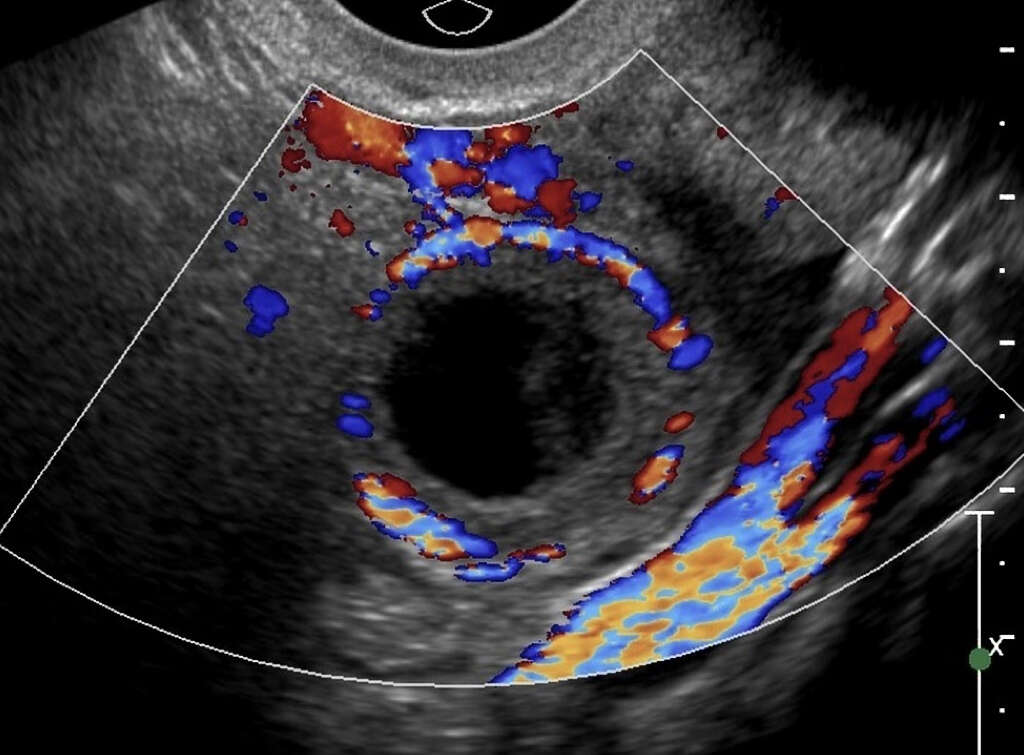
7. What Is the Treatment for a Hemorrhagic Cyst?
Most hemorrhagic cysts do not need treatment. Most ovarian cysts shrink and disappear on their own. Over-the-counter pain medication can help with pain and reduce inflammation. If cysts are a reoccurring problem, the doctor may suggest hormonal birth control to keep hormone imbalances under control.
In severe cases, surgery may be recommended or required. Cysts that do not go away in several cycles or continue to grow may need to be removed. Any cyst that is causing severe pain that affects the patient’s everyday life may be a candidate for removal.

8. Is This Type of Cyst Dangerous?
Ovarian cysts are rarely a cause for concern. Since a hemorrhagic cyst is a functional cyst that has developed bleeding, it does not have any higher risks than other functional cysts. Most functional cysts last a few cycles at most and then disappear, so they can be monitored with a wait-and-see approach.
However, a ruptured cyst can cause severe pain and can bleed into the abdominal cavity, causing more painful symptoms. Cysts can rupture due to injury such as a fall or during intense exertion. A cyst that has ruptured may need surgical intervention. One that is still bleeding can be cauterized to stop the bleeding.

9. Does a Hemorrhagic Cyst Affect Fertility?
Ovarian cysts usually do not interfere with fertility, although the same underlying condition that leads to frequent cysts can also lead to infertility. Polycystic ovary syndrome is one condition that can cause infertility, and one of the primary symptoms of this condition is ovarian cysts.
Hemorrhagic cysts are no more likely to cause issues when trying to conceive than any other type of functional cyst. A doctor needs to rule out other types of cysts, such as those caused by endometriosis, if the patient is having trouble conceiving and has symptoms of an ovarian cyst.
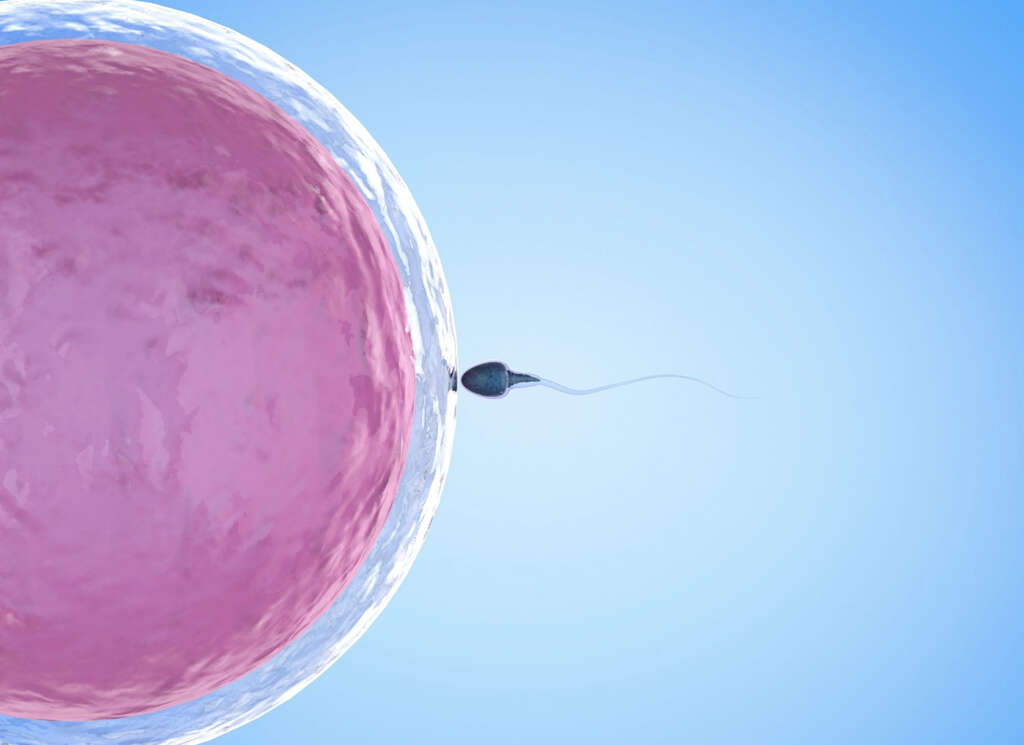
10. How Can a Hemorrhagic Cyst Be Prevented?
Ovarian cysts are very common in the childbearing population, and most of them do not have a specific cause or prevention method. Those who frequently have cysts may be suffering from PCOS, so treating this underlying condition can also reduce the number of cysts that occur.
Another possible prevention method is taking hormonal birth control to even out hormone imbalances and regulate ovulation. Some individuals taking hormonal birth control do not ovulate at all, which reduces the chance of developing a cyst during the corpus luteum phase. Any menstrual cycle changes that are persistent should be reported to a doctor for evaluation.
